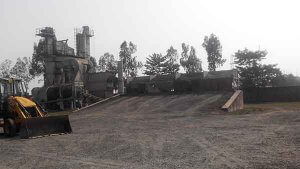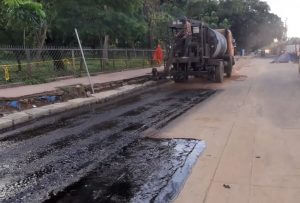Embankment Meaning:
The earthen material, which is laid and compacted to raise the grade line of a proposed highway or railway above the Existing Ground Level(EGL) of the original ground, is called an road embankment. The grade line of the road may be raised due to some reasons, which are as follows:
- keeping subgrade above Ground Water Table(GWT)
- preventing damage to the pavement from the surface and capillary water.
- To maintain the designed vertical alignment of the road.
Embankment design considerations include filling height, the material used, settlement consideration and stability analysis. In the case of grater fill height and weak foundation soil, ground improvement is necessary to control the settlement of the foundation soil. After construction, due to consolidation or fill height settlement or both, the embankment may settle.
Also, Read: Subgrade – Steps for Preparation of Subgrade
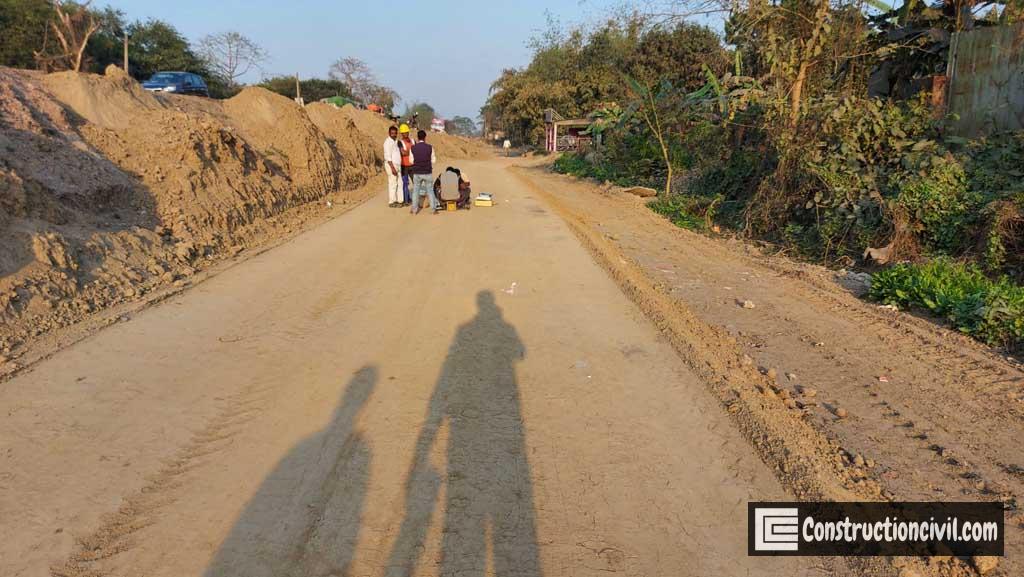
Also, Read: Granular Sub Base Construction and Quality Control
Embankment Settlement :
- When road embankment foundation consists of compressible soil with high moisture content
- Due to inadequate compaction of filled layers during construction operation
Action Measure:
The following action can be taken to eliminate settlement risk during construction operations.
- To increase the foundation soil consolidation rate by providing a sand drain.
- By proper compaction of filled layers during construction operation
Embankment Construction Equipment:
- Excavator
- Tippers /Dumpers
- Motor Graders
- Vibratory Compactor
- Tractors Dozer with Disc Harrows/ Spreading Blade / Ploughs
- Water Bowser with Sprinklers etc.
- Crawler Dozers
Embankment Construction Material:
- The Embankment material shall be soil, moorum and gravel, fly ash or a mixture of these three.
- The material shall satisfy the requirements defined in the clauses of the construction contract document.
- The materials used in the works shall be suitable roadway/drainage/structure excavated material or borrowed material approved by the Engineer as per requirements of MORTH Specifications.

Also, Read: Wet Mix Macadam Construction and Quality Control
Embankment Material Properties:
- Maximum Dry Density (MDD):
- For embankments, up to a height of 3.0m is 1.52 T/cum
- For embankments more than 3.0m in height, 1.60 T/Cum
- A separate density requirement as per the contract specification shall apply for fly ash.
- CBR: Minimum CBR requirement NIL
- Coarse material: Size not more than 75mm
- Free swell index: Not exceeding 50% (to be used only below 500mm of top of the embankment)
- Liquid Limit: Not exceeding 70
- Plasticity Index: Not exceeding 45
Setting out Works:
- The road’s centerline shall be set out using a continuous transit theodolite/total station survey.
- The reference points for this shall be as per the approved drawings and instruction of the Engineer.
- The working benchmarks shall be established from the approved reference benchmarks and near all permanent structures/cross drainage.
- The reference points shall be so located that these shall not be disturbed during construction.
- Reference pegs shall be fixed on both sides of the slopes. These pegs are meant as guides and shall be about 0.50-1.50m away from the toe of the embankment.
- Mark the limits of embankment filling with lime powder or pegs on the ground after clearing and grubbing are completed.
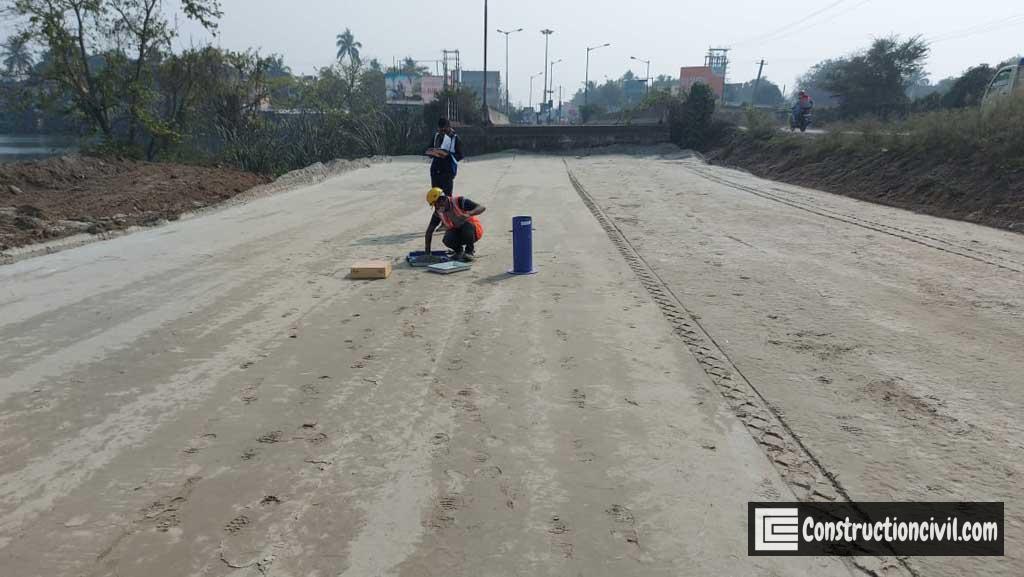
Also, Read: Dense Bituminous Macadam (DBM) Construction Requirements
Road Embankment Construction:
- Atterberg limits, MDD, OMC, and in-situ dry density of the material at ground level shall be checked.
- Any unsuitable material shall be removed as directed by the Engineer and replaced with suitable material.
- Embankment may be constructed by laying suitable material in layers not exceeding 250mm thickness.
- Each layer is compacted by rolling to a satisfactory degree or the required density achieved before the next layer is placed.
- Compaction is carried out at optimum moisture content so as to take benefit of maximum dry density using a specified compacting effort and equipment.
- All the measurements of filling shall be taken at every stage of construction.
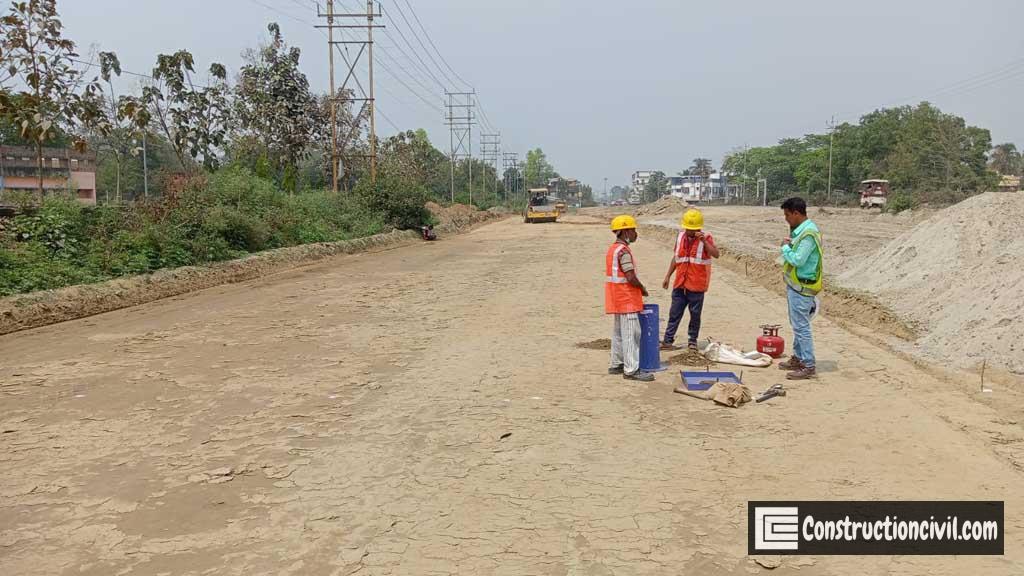
Also, Read: Construction of Mastic Asphalt for Roads and bridges
Quality Control and Testing:
- The compaction control shall be achieved on each layer by taking a random density measurement as specified in clause 903.2.2 of MORTH specifications.
- Field density tests shall be conducted by sand replacement method/non-destructive tests (Nuclear density gauge method).
- When density measurement reveals soft areas in the embankment, these are compacted further. If the specified compaction is not achieved, the material in the soft area shall be removed and replaced by approved material, compacted to the specification.
- Test results shall be entered in the relevant inspection/test formats and as per individual approved inspection and test plans.
- The alignment and levels of the compacted embankment top layer shall be checked to confirm that these are within permissible limits as specified in Table 900-1.
- Record of testing shall be maintained in pictorial/chart form showing the details like date of testing, bore area used and log number of approval requests etc., as necessary to monitor the activity.
- The following tests are Pertinent to Embankment (Ref clause 903.2 of MORTH)
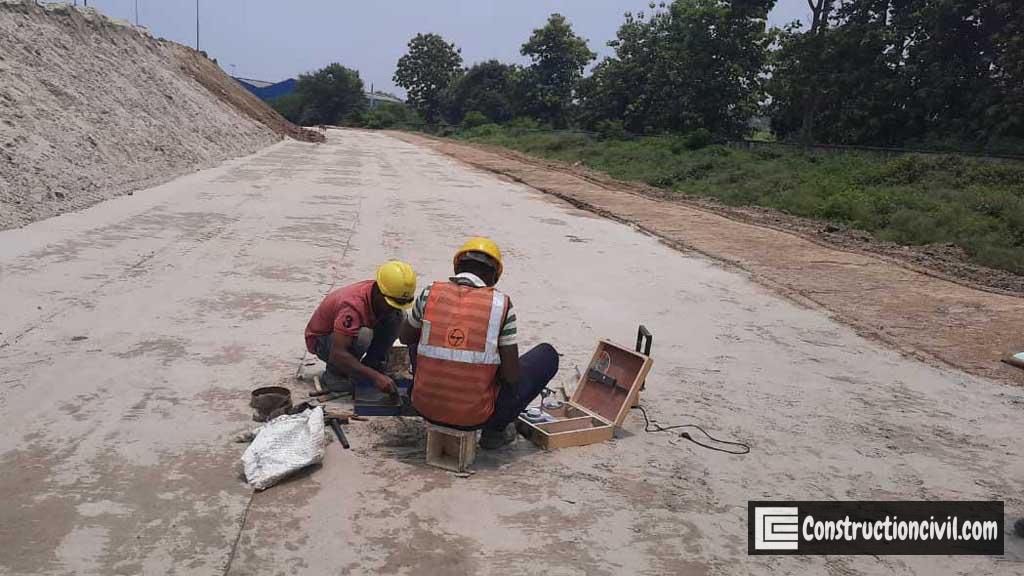
Also, Read: Asphalt Concrete/Bituminous Concrete(BC) Construction Guide
| Sr. No | Test | Code | Frequency |
| 1 | Sand Content | IS: 2720 (Part – 4) | Two tests per 3000 cum |
| 2 | Plasticity test | IS: 2720 (Part – 5) | Each type, two tests per 3000 cum |
| 3 | Density test | IS: 2720 (Part – 8) | Two tests per 3000 cum subject to a minimum of one test per 1000 Sqm. |
| 4 | Deleterious content | IS: 2720 (Part – 27) | Engineer to decide |
| 5 | Moisture Content | IS: 2720 (Part – 2) | One test per 250 cum. |
Also, Read: Site Clearance – Clearing and Grubbing for Highway Construction





